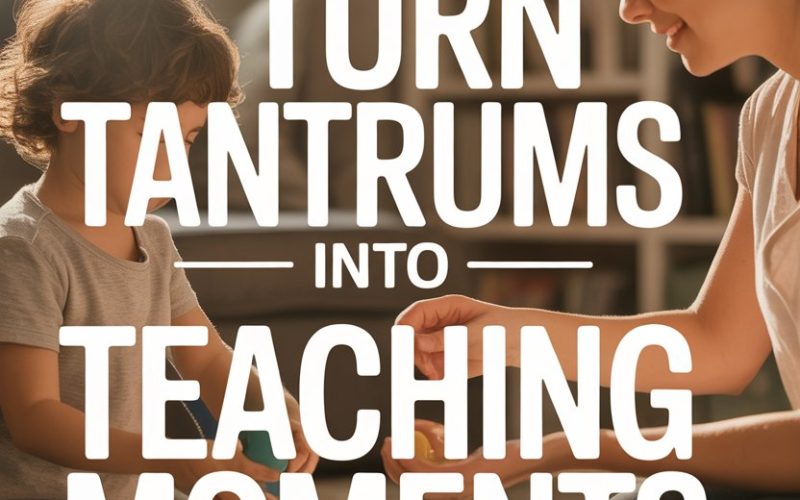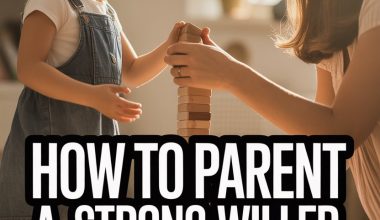If there were Olympic medals for meltdowns, toddlers everywhere would have a shot at gold.
The wailing, the flailing, the astonishing ability to become boneless in the middle of the supermarket aisle—parenting often feels like a live-action test of patience and grace under fire.
But here’s some good news: those tantrums, as exhausting as they are, can become some of the most powerful teaching moments you’ll ever have. All you need is a little know-how, a lot of patience, and maybe a nice cup of tea after bedtime.
The Secret Language of Tantrums
Tantrums aren’t just inconvenient displays of rage or sadness.
Children, especially the youngest ones, don’t plot to ruin your day with public performances worthy of an Oscar. Little ones are learning to handle huge emotions with pint-sized brains. Emotional regulation is a skill, not an instinct.
According to child development experts at Zero to Three, tantrums are a normal part of development as children test boundaries and express frustration they don’t have words for yet.
What’s actually happening? Their brains are under construction, with the logical “thinking” part (the prefrontal cortex) still very much a work in progress. The emotional “alarm system” is running the show.
When you see a child screaming over a broken biscuit—or, heaven forbid, the wrong colour cup—you’re witnessing an unfiltered emotional broadcast.
Your Calm is Contagious
Easier said than done, but keeping your cool is one of the quickest ways to help your child regain theirs. Children look to parents for emotional cues.
When you respond to a tantrum by channeling your inner Zen master (or at least pretending convincingly), you set the emotional tone.
Try taking a big, dramatic breath. Not only does this give you a moment to collect yourself, but it also models a simple strategy that kids can mimic in time.
Don’t be surprised if your little mimic one day starts sighing deeply mid-meltdown. Progress!
If your nerves are fraying, picture your child’s brain as a shaken snow globe. Your calm helps the flakes settle faster.
Child Mind Institute supports this, noting that warm, responsive care during stress helps children learn emotional regulation.
Naming the Feeling—No Mind Reading Required
Once the volume has died down slightly, it’s time for a bit of emotional detective work. Naming the feeling out loud helps children connect their experience to language.
You might say, “You’re really angry that we had to leave the playground,” or “It looks like you’re sad because your tower fell down.”
This isn’t about fixing the problem straight away. It’s about helping your child feel seen and heard.
According to research, putting feelings into words can actually reduce emotional intensity—even for adults.
You don’t have to nail it every time. Sometimes your best guess is enough. And if you get it wrong? “No, I’m not angry, I’m tired!” That’s helpful, too—your child is learning to clarify their feelings.
Set Boundaries Without Shaming
Teaching children about boundaries in the middle of a meltdown feels a bit like trying to put socks on an octopus, but it’s crucial.
Stay firm about non-negotiables (no hitting, no throwing remote controls at the telly) while showing empathy for the emotion driving the behaviour.
Try something like, “It’s okay to be upset, but it’s not okay to hit.” Simple, clear, and free from shame. According to Hand in Hand Parenting, this approach preserves your child’s dignity while reinforcing essential limits.
If your child is flailing dangerously, gently restrain if needed, and say, “I can’t let you hurt anyone.” The message: emotions are welcome, unsafe actions are not.
Teach Simple Coping Skills (Even to Tiny Humans)
Waiting for a child to reach school age before talking about coping skills is like waiting for a fire to start before buying a smoke alarm. Even toddlers can start learning basic tools to manage big feelings.
Show your child how to take big dragon breaths (dramatic, noisy exhalations encouraged), stomp their feet like an angry elephant, or squeeze a pillow. Offer choices: “Would you like a cuddle or some space?” Over time, these become well-worn tools in their emotional toolkit.
Some parents find it helpful to create a “calm-down corner” with soft toys, books, and sensory objects. The trick is not to use it as a punishment but as an inviting space for emotional recovery.
Connect With Empathy, Not Just Logic
Ever tried reasoning with a three-year-old mid-tantrum? It’s a bit like arguing with your WiFi when it drops out—frustrating and fruitless.
In the heat of the moment, logic is rarely welcome. Empathy is your best ally.
Connect first, and problem-solve later. Kneel down to your child’s level and offer a sympathetic nod or a gentle touch.
A simple “I know it’s hard to leave the park when you’re having fun” can do wonders to reset the mood.
This approach, recommended by Laura Markham, helps children feel understood, which is sometimes all they need to start calming down.
Pick Your Teachable Moments Wisely
Straight after a tantrum, both you and your child may still be running on adrenaline (and, if you’re honest, possibly coffee). Wait until everyone is calm, fed, and somewhat rational before revisiting the event.
Bring up what happened in a gentle, non-judgmental way. “Hey, you were really upset earlier when we had to tidy up. What could we do next time to make it easier?”
This encourages kids to reflect and come up with their own ideas for managing tough feelings.
You might be amazed by their creativity—one parent reported her four-year-old requested a “special dance party” to shake off bad moods.
Rituals and Routines: The Unsung Heroes
Unpredictability is a tantrum’s best friend. Regular routines can help children feel secure, making transitions less jarring.
Create rituals around tricky moments—like a “goodbye song” before leaving the playground, or a special handshake at bedtime.
If you know certain transitions are meltdown magnets, give plenty of warning. “We’ll be leaving the park in five minutes. Do you want one more go on the slide or the swings before we go?”
These small acts of preparation can save everyone a lot of grief.
Model Mistakes—and Apologies
No parent is a robot (thank goodness for that). When you lose your temper, snap, or overreact, own it.
Apologise sincerely. “Oops, I was grumpy when you spilled your juice. I’m sorry, that wasn’t fair.” Kids learn a ton from watching how adults handle their own stumbles.
This normalises mess-ups and shows that making amends is part of life. For bonus points, talk out loud about how you’re working on your own feelings: “I need to take a little break to calm down.”
According to research from Journal of Child Development and Care, children whose parents model emotional regulation develop stronger coping skills themselves.
When Tantrums Feel Overwhelming
Some days, you might feel like the tantrum fairy has sprinkled extra chaos in your house. If your child’s meltdowns are frequent, intense, or last longer than seems reasonable for their age, it’s perfectly okay to ask for help.
Speak to your GP or a child psychologist for guidance, especially if you’re noticing signs of anxiety or worry.
And if you ever feel your own rage boiling over, step away safely, phone a friend, or reach out to a support line. No parent should be expected to do this alone.
Tantrums Are Normal—And So Are You
If you’re parenting a child who throws a wobbly over the wrong brand of yoghurt, you’re in good company. Tantrums aren’t a reflection of your parenting skills, your child’s future prospects, or your standing at playgroup.
They’re the sound and fury of a child developing vital life skills: self-awareness, coping, communication.
With a few tweaks, a bit of empathy, and a healthy sense of humour, those turbo-charged meltdowns can become powerful lessons for both you and your child.
Raising Resilient Kids—One Tantrum at a Time
Each tantrum survived is another brick in the foundation of emotional intelligence.
You’re not just making it to bedtime. You’re raising a small human who, in time, will learn to ride those emotional waves with less drama and more skill.
Next time you’re in the midst of a meltdown, picture yourself as an emotional surf instructor, calmly guiding your child back to shore (with or without three lost shoes and a sticky handful of raisins).
You’ve got this. And when you don’t? There’s always chocolate.





